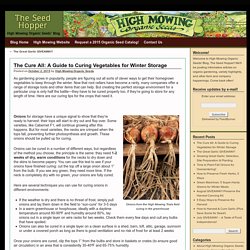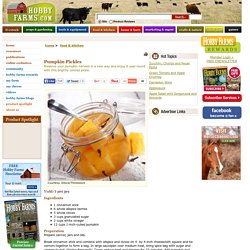

DIY Airlock for Fermentation. DIY Airlock for Fermentation. Are Mason Jar Ferments Safe? Recently, the internet has been in a tizzy over whether or not mason jar ferments are truly safe.

Perhaps you’ve read other bloggers struggling with the issue. Or, maybe this post is the first you’ve heard about it. Or maybe you’re one of the few who’s wondering why I’m even talking about fermentation at all, let alone something called mason jar ferments. Fermented foods pre-date refrigerators, hot water bath canning, and modern preservatives.
They are one of the ways traditional food cultures “put up” their summer harvest for the winter. The basic premise behind these traditional fermented foods is this: lacto-bacillus bacteria cultures take over the food, producing lactic acid. The End of My Culturing Career. Second ferment your kefir; Your taste buds will thank you. Lemon peel Many years ago I discovered a way to make kefir not only taste better, but to increase the nutrients in it.

Tomatoes with 65,000,000+ Probiotics. “It’s difficult to think anything but pleasant thoughts while eating a homegrown tomato.” ~ Lewis Grizzard Summer tomatoes taste the best How do I know that a spoonful of this dish has 65,000,000+ probiotics in it?

There is a cultured Green Tomato dish on the market, made by Bubbies pickles, that is fermented. Second ferment your kefir; Your taste buds will thank you. Perpetual Pickle (How to Use Leftover Lemons) - My Heart Beets. This Perpetual Pickle recipe is a great way to use up leftover lemons.

Any time we host a party, we end up with a lot of leftover lemon wedges. התססה. Best-Ever Solar Food Dehydrator Plans. For nearly 20 years, I’ve led research teams as founder and coordinator of the Appropriate Technology Program at Appalachian State University.

We’ve conducted many original experiments to produce a design for the best food dehydrator you’re likely to find anywhere. Yes, this dryer is supersized — about 6 feet tall and 7 feet long — but it’s on wheels and thus moves easily, can dry large amounts of food quickly and is a must-have for off-grid living. If you have a big garden or buy bulk produce, this solar dehydrator will help you keep up with food preservation all summer and into fall.
If you live in a cloudy or humid region, you can add heat from light bulbs to improve its operation. 12 Foods You Need to Dry. If you’ve ever used a dehydrator to dry your harvest, you’ve likely experimented with onions, peppers, tomatoes and apples.

That’s great, but what about the rest of the produce that you don’t have time to can or won’t fit in the freezer? Those fruits and veggies often find their way into the compost pile, so instead of letting that food go to waste, why not make some convenience foods? Snacks made from your homegrown produce are less expensive and healthier than store-bought versions riddled with excess salt and fat. Food Storage: 20 Crops That Keep and How to Store Them. Related Content Fresh Storage of Produce For the past few years, we've experimented with different ways of storing food fresh and now we're e...

Here in southwest Virginia, my partner and I take pride in growing and storing most of our fruits and vegetables. The Cure All: A Guide to Curing Vegetables for Winter Storage. As gardening grows in popularity, people are figuring out all sorts of clever ways to get their homegrown vegetables to keep through the winter.

Now that root cellars have become a rarity, many companies offer a range of storage tools and other items that can help. But creating the perfect storage environment for a particular crop is only half the battle—they have to be cured properly too, if they’re going to store for any length of time. Here are our curing tips for the crops that need it. Onions from the High Mowing Trials field curing in the greenhouse. Dehydrate Your Way to Green Powder. Harvesting & Preserving by the Moon. 12 Foods You Need to Dry. Food Drying with an Attitude: A Fun and Fabulous Guide to Creating Snacks, Meals, and Crafts by Mary T. Bell. Recipe: Pumpkin Pickles. Yield: 3 pint jars Ingredients 1 cinnamon stick6 whole allspice berries5 whole cloves3 cups granulated sugar2 cups white vinegar12 cups 1-inch-cubed pumpkin PreparationPrepare canner, jars and lids.

Break cinnamon stick and combine with allspice and cloves on 4- by 4-inch cheesecloth square and tie corners together to form a bag. In large saucepan over medium heat, bring spice bag with sugar and vinegar to boil, stirring frequently. Remove spice bag and pack pumpkin chunks in hot jars, to within 1/2 inch of jar rim. Label and store up to 18 months unopened. 7 Easy Steps for Fermenting Vegetables. How to Brine Your Own Olives. Olives ripe on the tree.

Photos: Aisha Abdelhamid For those fortunate folks living in the northern hemisphere, now is the right time to find fresh organic olives at your local market. For an extra special treat that carries the sunshine of summer into the late days of winter, start your olive brining in the autumn. Doing it yourself is easy, and the advantages are many, not the least of which is the great, naturally tart and meaty flavor of the beloved olive.